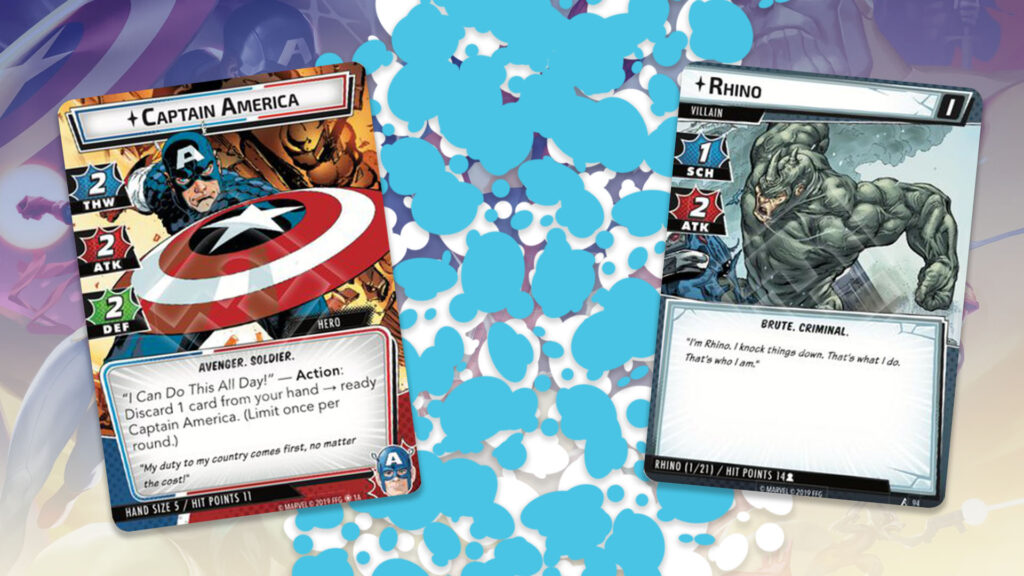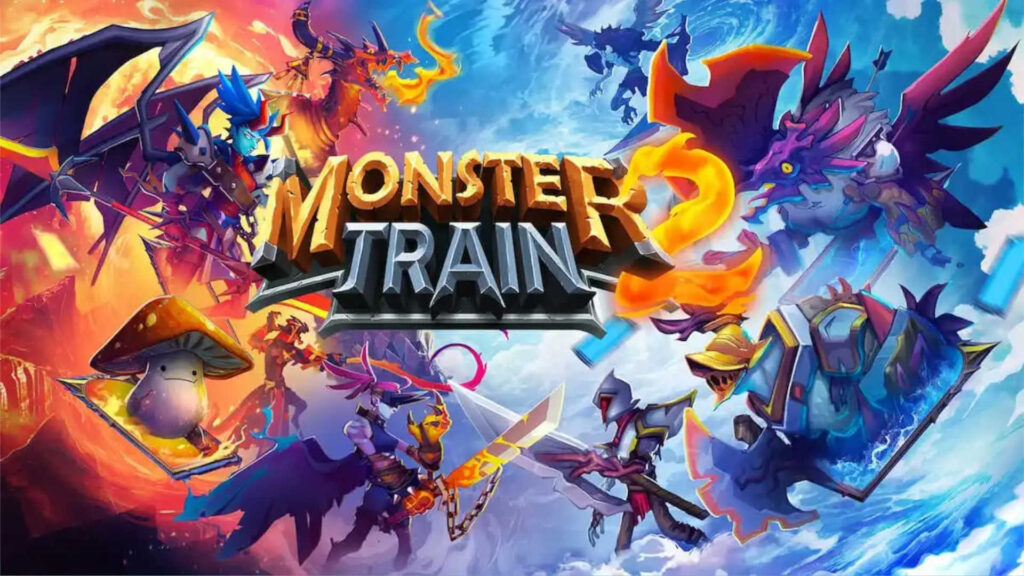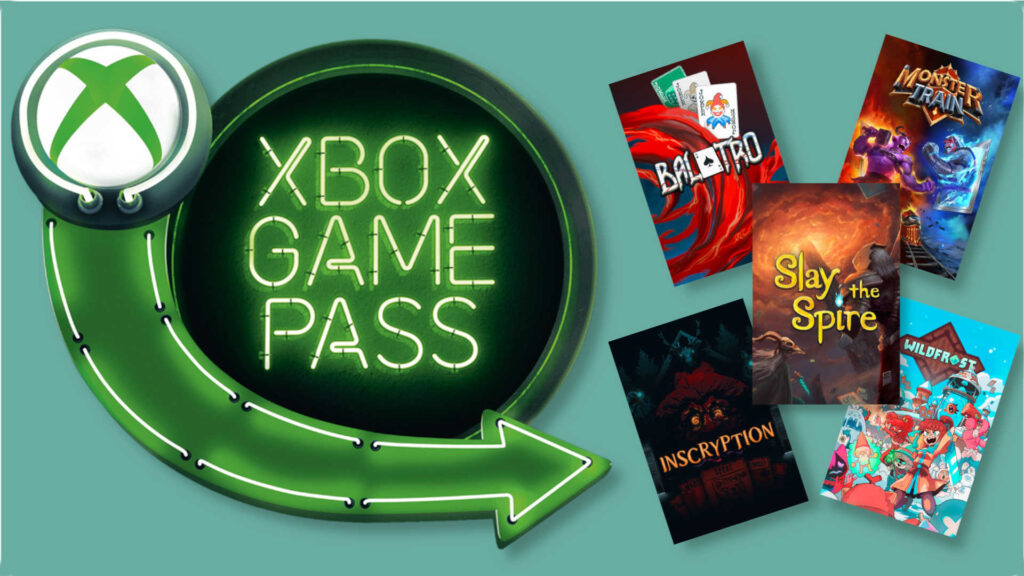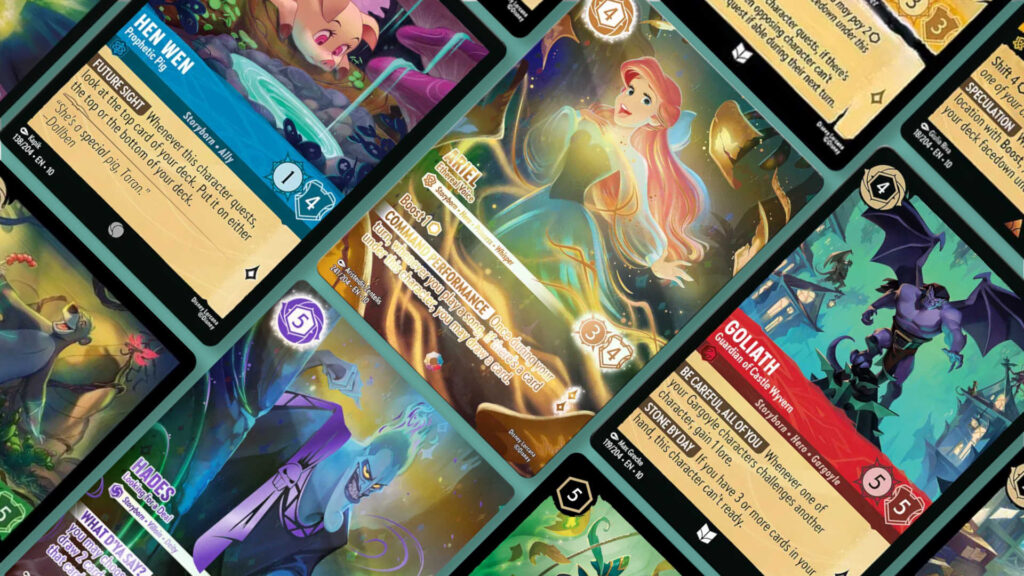All card images courtesy of Fantasy Flight Games
Marvel Champions is a game in which you take on the role of a Marvel hero, armed with a deck composed of fifteen cards specific to that hero and a minimum of twenty-five other cards of the deck builder’s choice. You and up to three other players combat one of over sixty different villains, each playing as their own minigame within the rules framework. Most villains will require you take two stages of the character from their full hit points down to zero. But not every scenario will prove to be that simple.
This week we’re learning how to approach deckbuilding, the basics of setting up a game, and ultimately laying out the back and forth nature of a complete round of Marvel Champions. With the mental load of these basics down, taking on each scenario will come down to understanding the unique challenges posed and focusing on how to address them.
Table of Contents
ToggleDeck Building in Marvel Champions
The decks of Marvel Champions range from a minimum forty cards to a maximum fifty. Construction starts with the required fifteen or so cards bearing the hero’s picture in the lower right corner, plus cards from one of five aspects and any number of the basic cards, available to everyone.
Importantly, there is no shame in net-decking. The first few decks you build may be influenced by people’s lists on MarvelCDB or from podcasts and YouTube content. Having this road map as inspiration means that you will have a functional deck, allowing you to skip over the discouraging playtests and discover a wide range of cards which prosper or fail against different scenarios.
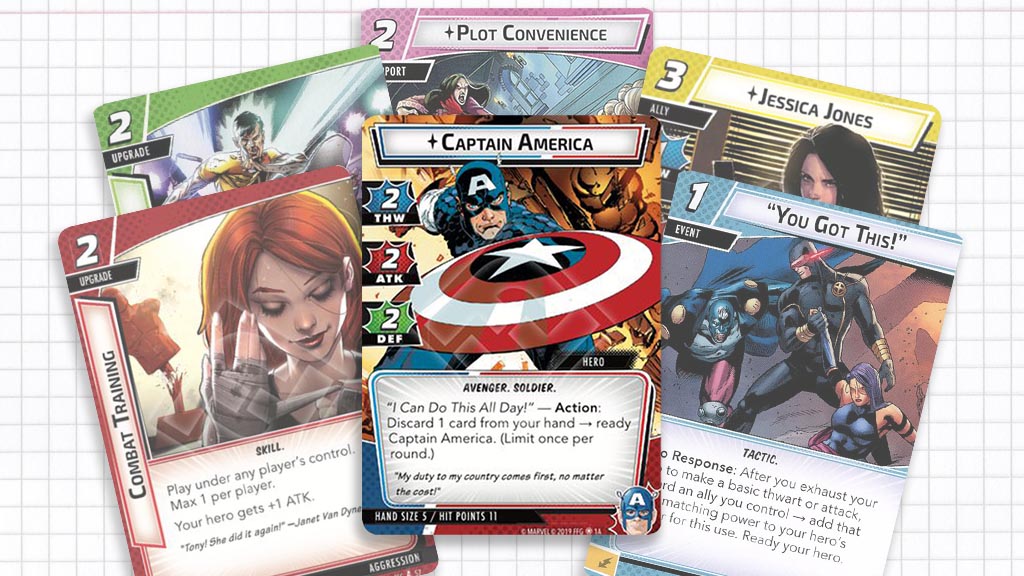
The best place to start when assembling a deck is the aspect of your deck and player count. Each hero leans into one or more of the five aspects – Aggression, Protection, Justice, Leadership, and ‘Pool – easier than others. And when playing solo, Justice and Protection can be the easiest to achieve a “jack-of-all-trades” style balanced deck. Build for power or theme; there is no correct answer.
For the purposes of our example game, we’ll be utilizing the Captain America Justice deck, titled Captain America – S.H.I.E.L.D Commander. While Captain America thrives in a wide variety of builds, the support of the S.H.E.I.L.D. trait brings an immense help in slowing the villain down and buying you time to find a path to victory.
The Setup for Marvel Champions
Heroes
After you’ve selected your hero and assembled your deck, its time to set up a game of Marvel Champions. This includes these basic steps:
- Placing your identity into play as their alter-ego
- Set your hit point dial to the starting hit points, as listed at the bottom left of both sides of your identity’s card
- The first player is decided and given the token used to track the player order
- And each hero’s obligation and nemesis set is placed aside, identified by the white text in the bottom left and the mismatched orange card backs
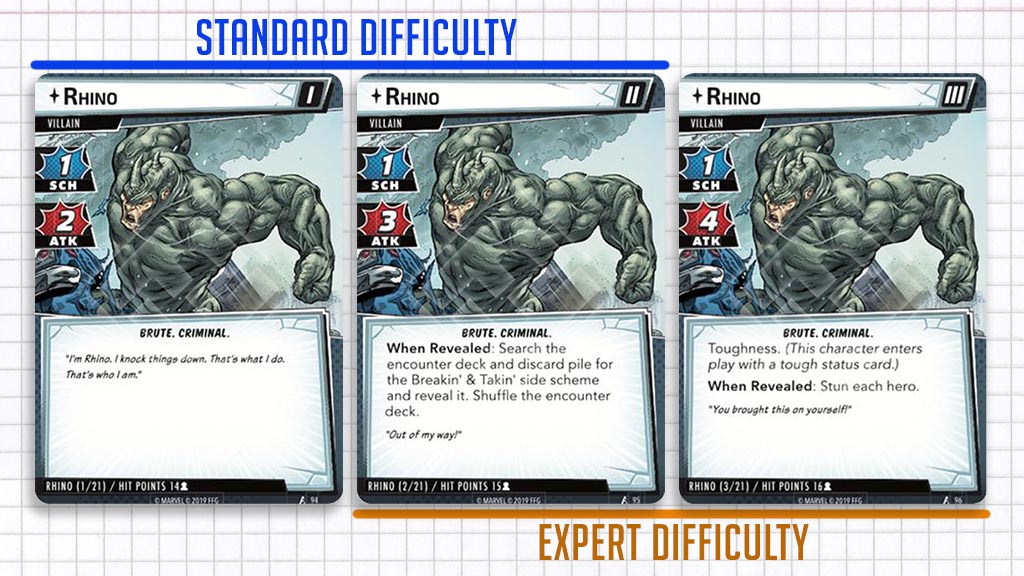
The Villain
Once the players have all shuffled their decks and established their play area, the villain is chosen and a villain deck is assembled. For standard difficulty, the villain deck will be comprised of stage one atop stage two of a villain, with expert difficulty using stages two and three. The main scheme is put in play, and if there are multiple, a similar main scheme deck is also established. The hit points are set for the villain and any Setup or When Revealed abilities of the villain and schemes are resolved. The encounter deck is then created, by shuffling the set aside obligations and required encounter sets together.
Opening Hands and Mulligans
The players can then draw their opening hands. Hand size is determined by the text at the bottom left of your identity. And each player may preform one mulligan, in which they discard any number of the cards in their hand and draw back up to their hand size.
Things to keep in mind are the cost of the card, denoted by the number in top left, and what resources each card generates, denoted by the symbols on the bottom left. Cards are paid for by discarding other cards from your hand, and you’ll draw back up to you max hand size at the end of every player phase, so don’t be afraid to use up as much of your hand as you can.
After all mulligans have been preformed, resolve any Setup abilities of your alter-ego and start the game by moving into the Player Phase.
The Player Phase
Due to the automated nature of Marvel Champions, during your turn, you can rest assured that nothing too unpredictable is going to happen during your turn. Turns are taken in a clockwise player order, during which players will be able to play out their cards, trigger actions on cards, use the basic powers of identities and ally cards (REC, THW, ATK, and DEF), and change between hero and alter-ego forms.
There’s no set order to how you play out your turn. With enough experience, you’ll learn to sequence your actions in ways that maximize your hero’s strengths. Importantly, the contents of your hand does not need to be hidden from other players.
To best contextualize this, let’s take a look at a post-mulligan example hand:
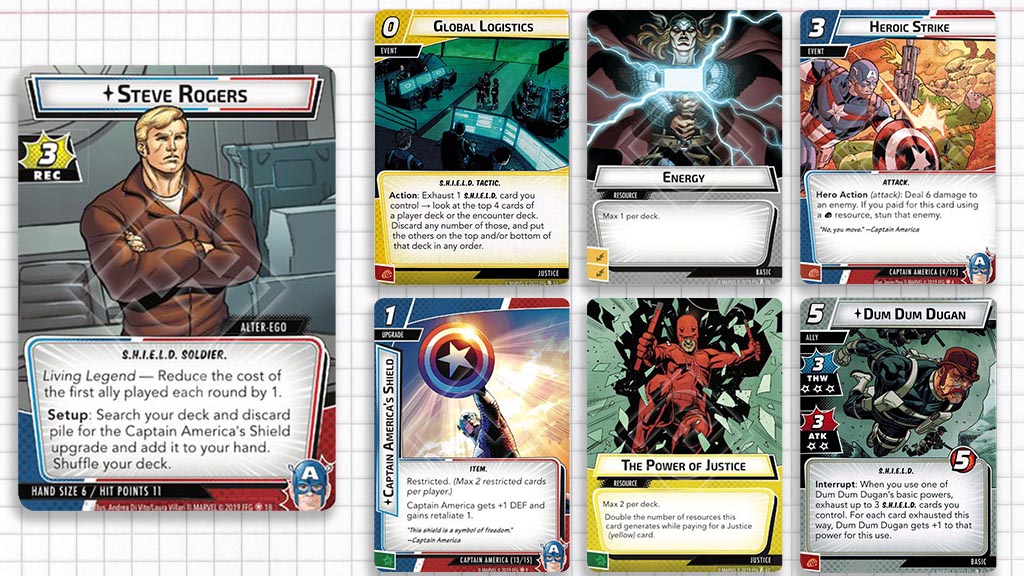
One line of play that would be advantageous is playing out Dum Dum Dugan with the cost reduction granted by Steve Rogers, paying with the resources provided by Global Logistics, Energy, and The Power of Justice. Then use the remaining Heroic Strike to pay for Captain America’s Shield, and change to hero form. Building out in the opening turn can be very important and this allows for that. Plus, we’ll have a reasonable board as we go into the villain phase.
Alternatively, if you want to prioritize damage, you can simply change to hero form and play Heroic Strike, paying with Energy and Dum Dum Dugan. This would stun the villain, buying you an entire turn without damage. Captain America’s Shield can then be played, using The Power of Justice. This leaves Global Logistics to either be used in a fresh hand next turn or for the “I Can Do This All Day!” action on Captain America, allowing for an extra basic action from the hero.
Using Basic Powers
For the purposes of this example, we’ll follow the former line of play. It uses up our entire hand, allowing us to draw through our deck, and provides repeatable damage in the form of an ally. We’ll exhaust Captain America for a basic attack (ATK) and keep Dum Dum Dugan back, as it’s possible we will draw into S.H.I.E.L.D. cards, bumping up his stats in future turns.
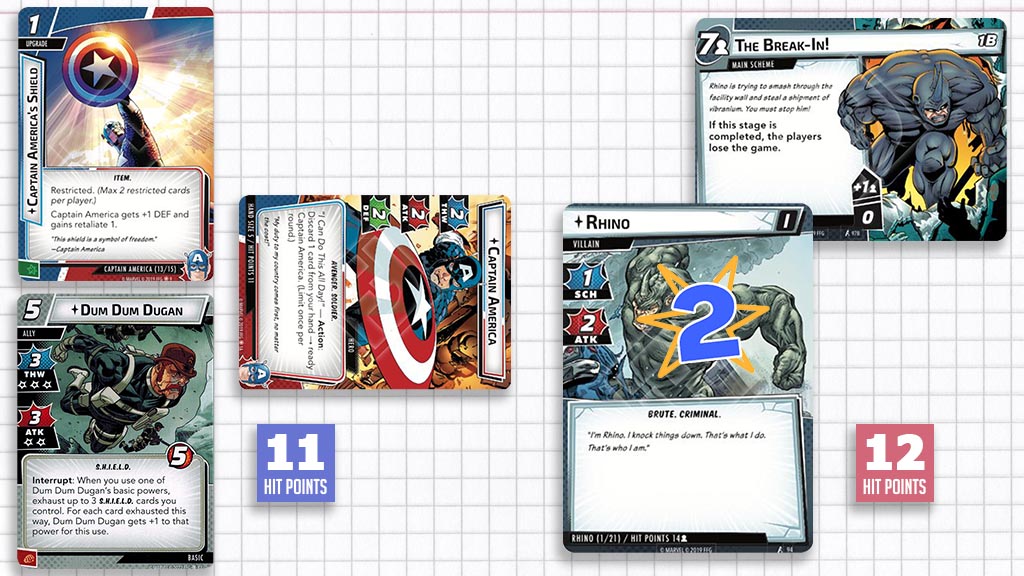
End of Player Phase
Once each player has completed their turn, the phase ends and you’re allowed to discard as much of your remaining hand as you like, or none of it, and draw up to the hand size of your hero’s current form. This is also the point in which you’ll ready any exhausted units.
We’ve used up our entire hand, so we’ll draw a new five-card hand: Homeland Intervention, Global Logistics, Super-Soldier Serum, Surveillance Team, and Agent 13.

The Villain Phase
The Villain Phase is our Big Bad’s chance to further their scheme, deliver powerful attacks to heroes, and possibly throw off the players’ tempo.
The phase begins by adding threat to the main scheme as designated on the main scheme, usually one per player, before the villain and any engaged minions activate. Any identity in hero form will be attacked and any in alter-ego form will allow the enemies a chance to scheme.
Activations
After activating, the villain is given the top card of the encounter deck as a facedown boost card. Against an alter-ego, this card will be revealed with little interruption, adding any of the triangular icons on the revealed card to the villain’s scheme (SCH) value, resulting in the grand total amount being added to the current main scheme in the form of threat.
Against a hero, the villain is still given the facedown boost card, but heroes are given the choice of exhausting their hero to defend using the defense (DEF) value, exhausting any ally to redirect all potential damage to them, or leave the attack undefended, allowing all potential damage to go directly to the hero activated against. Importantly, in multiplayer, other players may exhaust their hero or allies to defend for each other.
![]()
Additionally, any boost cards with star icons add a Boost ability to the activation, denoted by bolded text on the lower half of the text box. All the text under the thin line of the text box constitutes the effects being resolve during the scheming or attack activation.
Back in our example game, we have full health and retaliate 1 from Captain America’s Shield. If we had an attack event in our hand, defending may be something to strongly consider. But when Rhino activates against us, we decide to take the attack undefended. At that point we reveal the facedown boost card, finding Stampede, a card with a single boost icon. This brings the undefended attack to three, taking Captain America to eight hit points, but also causes Rhino to take a single point of damage, due to retaliate 1, a keyword that deals a damage to the attacker if the defending character survives combat.
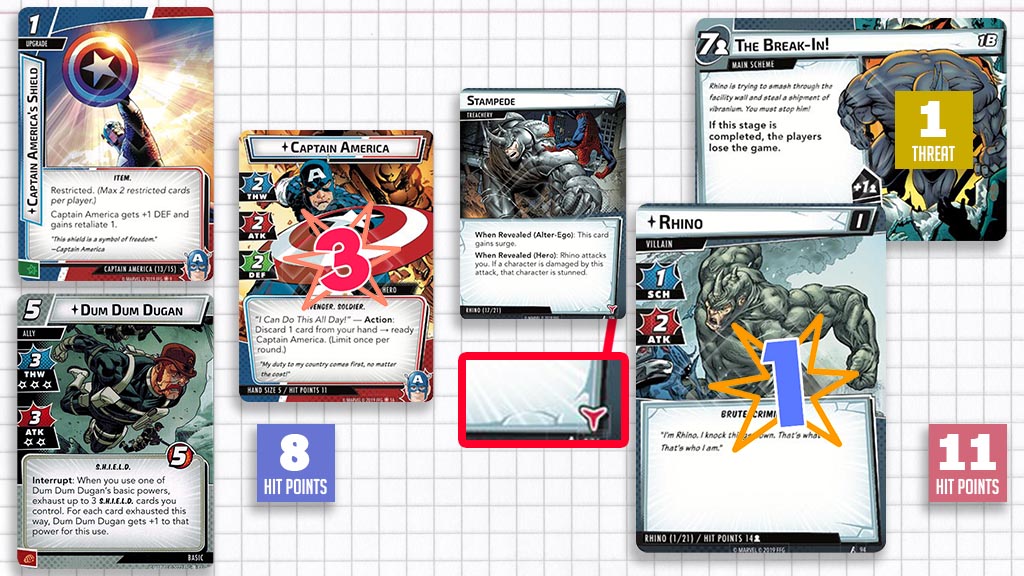
Encounter Cards
After all activations have been resolved, we deal each player an encounter card. Revealed in player order, these can be the scenario’s chance to stun or confuse us, engage us with a guard minion, or place side schemes into play, which may draw our attention away from the villain for a turn. These cards come in the form of attachments, minions, side schemes, treacheries, and obligations.
Treacheries are the most straightforward, being resolved through their When Revealed text and then placed in the villain discard pile. For minions, the player who drew them places them in play engaged with them. They may or may not have a When Revealed ability, which would resolve after engagement. Sides schemes are put into the shared play space, entering with threat already on it, an amount possibly affected by keywords or When Revealed text. Attachments enter attached to the card type designated and can augment any number of factors about the card its attached to. And obligations are given to their respective heroes, regardless of which player draws them.
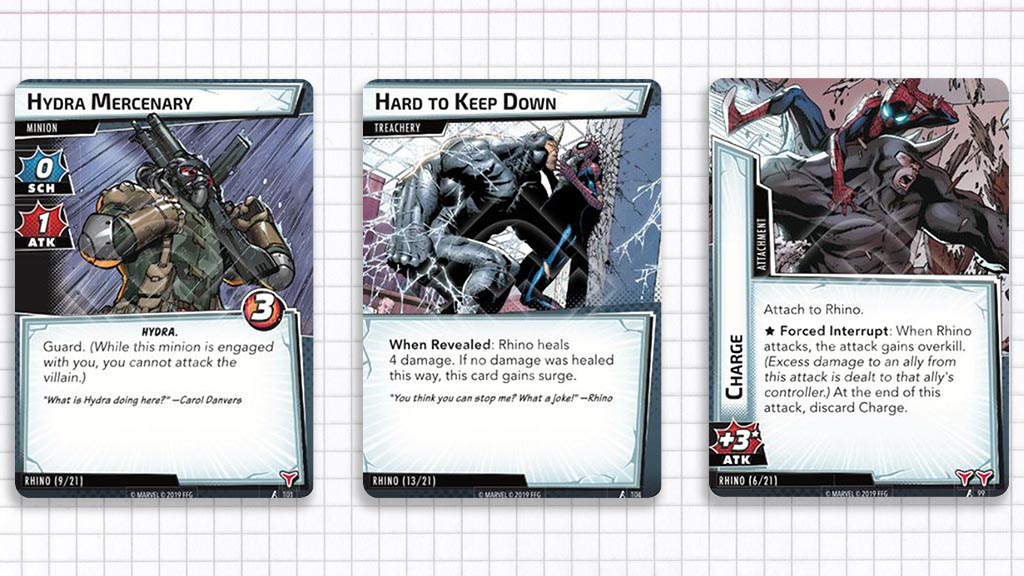
Playing through the example game, our encounter card ended up being Hard to Keep Down, a treachery that heals up to four damage, meaning that Rhino will return to his original 14 hit points before ending the Villain Phase. This marks the end of the round. In a multiplayer game, the first player token would be passed to the next player going clockwise around the table and the Player Phase would begin anew. This back and forth continues until the heroes either win by bringing each stage of Rhino to zero hit points, or lose when either all heroes reach zero hit points or by the main scheme completing by reaching its max threshold.
Depending on the scenario and board complexity, a round of Marvel Champions can take mere minutes to complete. And in others, you will have to halt all progress to discuss how each player may be able to address each threat on the table. The fun of the game often comes down to how well you can balance attacking, thwarting, and overcoming the speed bumps unleashed by the encounter deck.
Go Play Marvel Champions
Hopefully, with this understanding of the basics of the player and villain turns, you can be prepared for oncoming challenges.
Wanna learn a great way to get into deck building in Marvel Champions? Try the 4-Pack Challenge.

